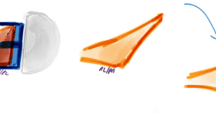Abstract
Objective:
Total shoulder replacement for restoration of function and for pain relief of damaged glenohumeral joint accompanied by extensive irreparable cuff defect.
Indications:
Any painful shoulder arthropathy with insufficient and irreparable rotator cuff, especially primary defect arthropathy, rheumatoid arthritis with extensive rotator cuff defect, arthropathy after reconstruction of rotator cuff, mutilating rheumatoid arthritis, and crystal-induced arthropathy. Relative: failure of primary shoulder replacement in the presence of an irreparable cuff defect.
Contraindications:
Structural or neurogenic lesion of deltoid muscle. Advanced glenoid destruction. Relative: age < 65 years.
Surgical Technique:
Anterosuperior or deltopectoral approach. Exposure of glenoid. Resection of humeral head at epi-metaphyseal junction. Complete detachment of anterior, inferior, and posterior capsule from glenoid neck. Preparation of glenoid for cement-free fixation of glenoid base plate (metaglène). Preparation of humeral shaft for implantation of humeral component in 0–10° of retroversion. Screwing of glenosphere to base plate. Insertion of cemented or cement-free modular humeral component.
Results:
Between 10/1997 and 03/2001, a reverse total shoulder arthroplasty was done in 57 patients (14 men, 43 women; average age 70.1 years). Average follow-up time was 18.2 months. 98% of patients would agree to repeat surgery. Average Constant Score adjusted to age and gender was 94%, 97% for patients not having undergone previous surgery. All patients reported complete or almost complete freedom of pain. On the condition that the deltoid muscle was not damaged during previous surgery, a good improvement of power and function could be obtained. All functional parameters were normal for the patient’s age with the exception of a slight limitation of internal rotation (average L5). The power of maintained abduction also corresponded in general to age-specific values. Only grade 1 or 2 inferior glenoid notching was observed but never reaching or surpassing the inferior screw (grade 3 or 4); no glenoid base plate loosening.
Similar content being viewed by others
Author information
Authors and Affiliations
Corresponding author
Additional information
The following is a reprint from Operat Orthop Traumatol 2005;17:1–24 and continues the new series of articles at providing continuing education on operative techniques to the European trauma community.
Reprint from: Operat Orthop Traumatol 2005;17:1–24. DOI 10.1007/s00064-005-1119-1
Rights and permissions
About this article
Cite this article
Seebauer, L., Walter, W. & Keyl, W. Reverse Total Shoulder Arthroplasty for the Treatment of Defect Arthropathy. Eur J Trauma 31, 508–520 (2005). https://doi.org/10.1007/s00068-005-6505-8
Issue Date:
DOI: https://doi.org/10.1007/s00068-005-6505-8




